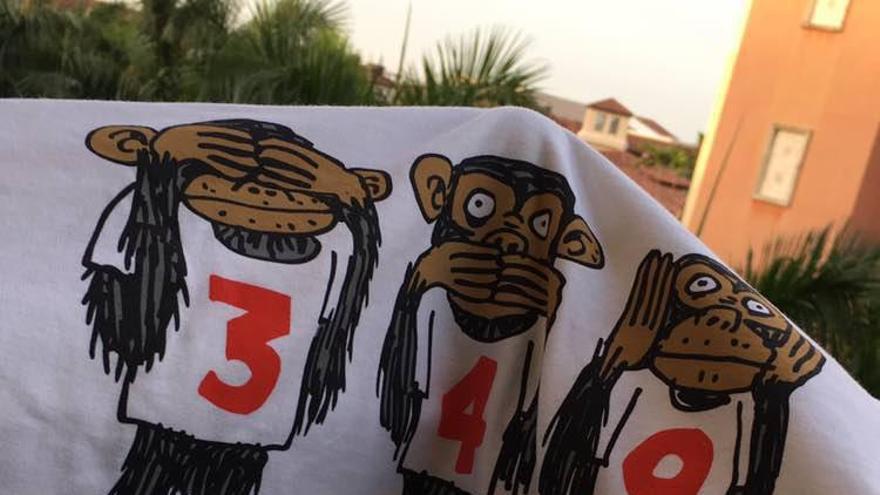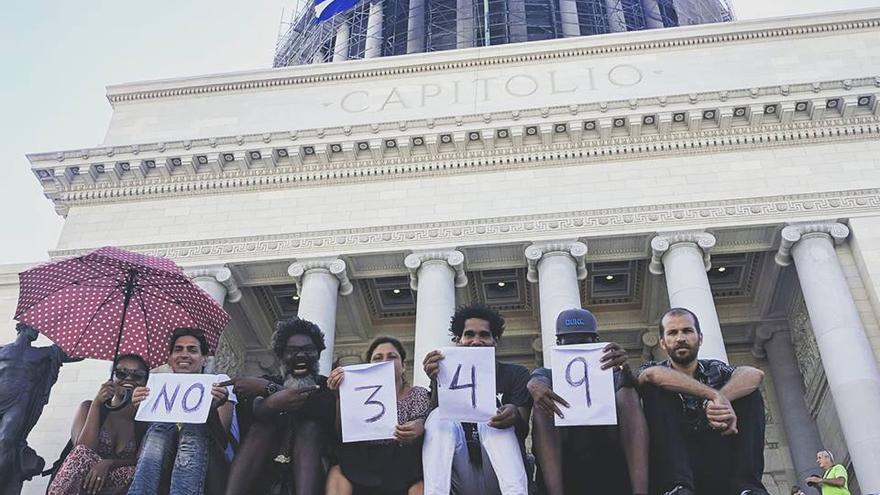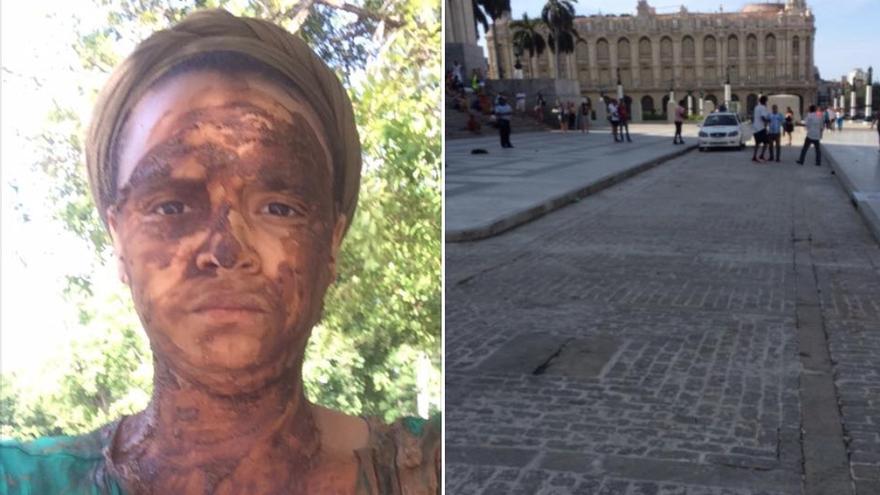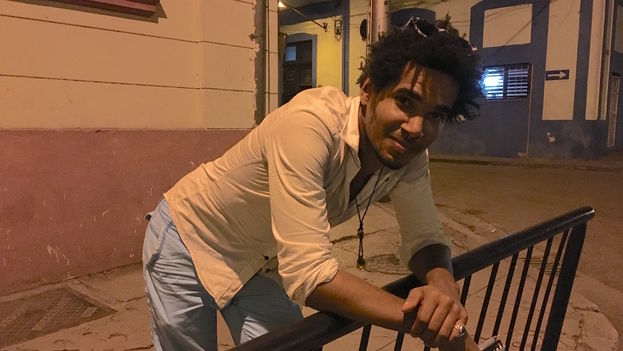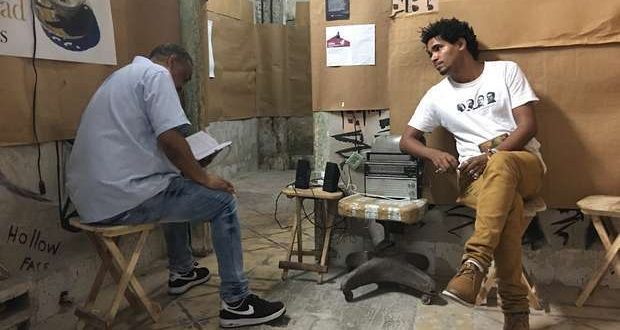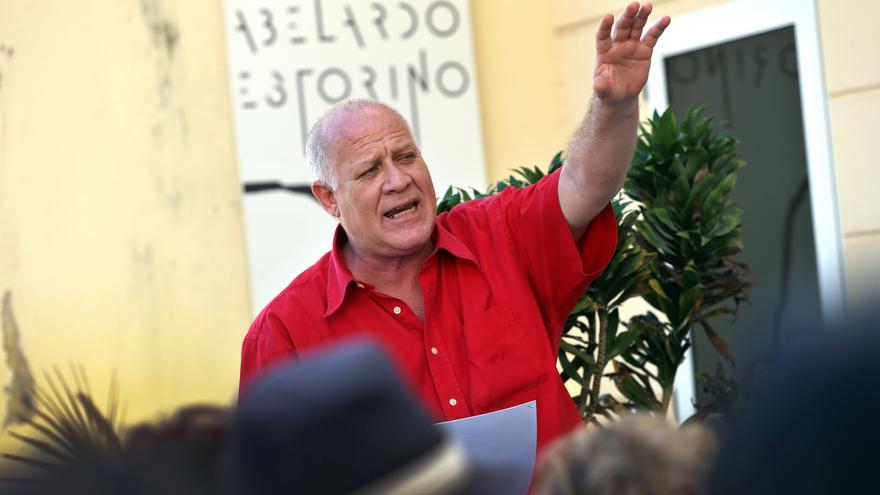
![]() 14ymedio, Havana, 8 December 2018 — The Cuban government has decided to stop the full implementation of Decree 349, a few days after it also backed off on fully implementing a package of measures to control the private sector. On Cuban TV’s Roundtable program this Friday, Minister of Culture Alpidio Alonso, announced that the unpopular Decree 349 will only be applied in a “consensus” and “gradual” manner.
14ymedio, Havana, 8 December 2018 — The Cuban government has decided to stop the full implementation of Decree 349, a few days after it also backed off on fully implementing a package of measures to control the private sector. On Cuban TV’s Roundtable program this Friday, Minister of Culture Alpidio Alonso, announced that the unpopular Decree 349 will only be applied in a “consensus” and “gradual” manner.
Alonso blamed the controversy generated by the decree, which would regulate artistic expression, to problems of interpretation and defended the need to put an end to “vulgarity, bad taste, intrusion and mediocrity.” However, he acknowledged that the Decree, which went into effect on December 7, still does not regulate “certain areas of art promotion and cultural services that currently have no legal standing.”
The minister responded to the flood of criticism that Decree 349 has provoked, but avoided naming the artists who have staged numerous protests outside the Ministry of Culture, such as Tania Bruguera and Luis Manuel Otero Alcántara, or others who have expressed their discontent in social networks, including the well-known actor Luis Alberto García. continue reading
None of the voices that have opposed the regulation were present on the television program, which featured Fernando Rojas, Vice Minister of Culture; Rafael González Muñoz, president of the Hermanos Saíz Association; and Lesbia Vent-Dumois, president of the Association of Plastic Artists of the government-run Cuban Writers and Artists Union (UNEAC), who argued in favor of implementing the measure.
Rojas said that “the enemies of the Revolution want to present Decree 349 as an act of censorship” and Rafael González Muñoz mentioned the criticisms “published in the blog Segunda Cita,” but without mentioning its author, the troubadour Silvio Rodríguez, a figure strongly allied to the official ideology who, in recent months, has been launching criticisms of the management of Cuban president Miguel Diaz-Canel.
Decree 349 has caused an earthquake in the island’s artistic community, where independent and alternative spaces have grown in recent years. In a country where there is an increasing number of recording studios in private homes, private premises that hire musicians or comedians directly, and producers of audiovisuals outside government institutions, the regulations constitute a return to the times of greater centralism.
The measure establishes that atists must be linked to cultural entities under government control and, only then, can they obtain the necessary permits to present their work in spaces open to the public, such as private galleries. To ensure that it is applied, the Ministry of Culture enlists a group of inspectors who can close an exhibition or end a concert if they consider that it is not part of the cultural policy of the Revolution.
The artists see in these powers a political underpinning, disguised as a fight against vulgarity, and one that could start a witch hunt against uncomfortable and creative works that openly criticize the ruling party.
Article 2.1 of the Decree lists among the offenses that will be penalized that of providing “artistic services without being authorized to perform artistic work in a position or artistic occupation.” A point that Rojas nuanced this Friday, when he stressed that it is not a battle against amateur artists and that it is not mandatory to stay in a state institution.
During the program, there were interviews with the troubadour Heidi Igualada, with Digna Guerra, director of the National Choir of Cuba, and with the actor Fernando Hechavarría, but none of them criticized the Decree. Fernando Medrano, a choreographer from Camagüey, added that the regulations were conceived to confront “uncouthness, vulgarity and bad taste.”
All the guests of the program alluded to misunderstandings and misrepresentations that had fomented the dissatisfaction around the regulation, and Lesbia Vent-Dumois detailed that with the Decree “knowing how to read is knowing how to interpret,” which meant that “they could not read.” The official criticized the critics of the measure as “ignorant” and “ill informed.”
For his part, the artist Luis Manuel Otero Alcántara, one of the most well-known faces against the regulations, believes that Friday’s official statements are intended to “dampen the commotion raised by the campaign against the Decree among artists.” It is a strategy “to divide the campaign, but the campaign will continue.”
“From the legal point of view, what matters is the Decree and not what a minister who can be dismissed tomorrow says,” the artist said. “Once again legality in this country is ignored,” and he lamented that several artists “were manipulated” in the interviews that were broadcast on the Roundtable program.
Decree 349 details up to 19 “contraventions” or violations of the law, including organizing concerts, recitals or exhibitions without the authorization of the Government or divulging audiovisual or culturalcontent that is violent, pornographic, discriminatory or offensive towards national symbols.
_________________________________
The 14ymedio team is committed to serious journalism that reflects the reality of deep Cuba. Thank you for joining us on this long road. We invite you to continue supporting us, but this time by becoming a member of 14ymedio. Together we can continue to transform journalism in Cuba.

